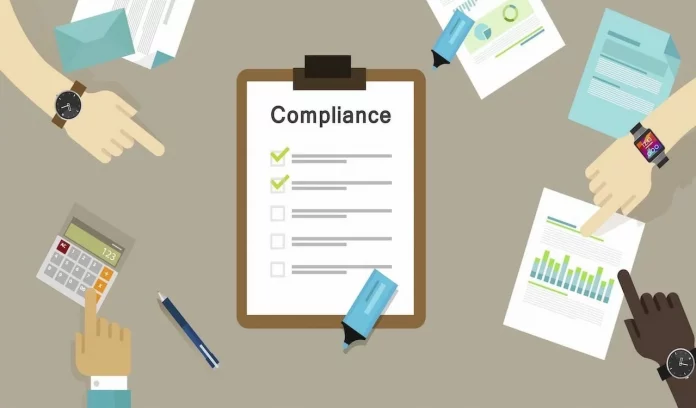With the rapid increase in the development of AI-powered marketing techniques, it’s important to understand not only the benefits but also the risks of using these techniques that take an individual’s attention away from your brand. In this article, learn how to protect your brand and maximize its potential through marketing compliance.
What is Identity Management?
Identity management is the process of protecting a brand’s identity across all digital channels. This can include ensuring that the brand’s name, logo, and other trademarks are used properly, that images and videos used online are appropriate, and that content is compliant with all applicable laws.
Identity management can help protect a brand against unauthorized use of its name, logo, and other trademarks. It can also ensure that images and videos used online are appropriate and compliant with copyright laws. Finally, it can help ensure that content is truthful and accurate, in compliance with all applicable laws.
Identity management is an important part of marketing compliance. By protecting a brand’s identity, businesses can avoid potential legal issues and protect their reputation.
How to Protect Your Brand with a Marketing Compliance Program

Whether your company operates in the fashion or technology industries, protecting your brand with a marketing compliance program is essential. A robust email compliance program can help guard against potential legal issues and protect your company’s image. Here are four tips for creating a marketing compliance program:
- Define Your Compliance Goals
Before starting any compliance activities, it’s important to clearly define your goals. This will help you prioritize which areas to focus on and ensure that all activities are consistent with your brand mission and values.
- Assess Your Current Practices
Once you have defined your goals, it’s necessary to assess how well your current practices align with them. This includes conducting audits of your marketing activities and tracking data such as impressions, clicks, and conversions.
- Create Guidelines and Policies
Once you have assessed your practices and determined where improvements are needed, create guidelines and policies outlining how you will comply with the law. These should be strict but also reasonable, taking into account your company’s size, resources, and business goals.
- Train Your Employees on Compliance Policies and Procedures
Last but not least, it is important to train your employees on the policies
It’s no secret that a strong brand identity is essential for businesses of all sizes. Protecting your brand with a marketing compliance program can help ensure that your marketing materials are legally compliant, helping to build trust with customers and detractors alike.
To start, you will need to identify all of your trademarks and copyrighted material. You should also create a list of all the products and services your business offers, as well as any special branding or promotional messages associated with them. Next, you will need to audit your existing marketing materials for compliance with applicable laws and regulations. This may include checking for trademark and copyright infringement, obscenity, libel, and other violations. Finally, you will need to develop a comprehensive marketing compliance program to protect your brand from future issues.
Any business that wants to protect its brand should consider implementing a marketing compliance program. By taking steps early on in the process, you can avoid costly legal complications down the road.
Why Is Brand Protection Important?
Marketing compliance is important for protecting the brand identity of a company. A brand is the name, symbol, or design that identifies a product or service and gives it a unique selling proposition. The protection of a brand can help protect a company’s intellectual property and trade secrets, as well as its reputation.
The first step in protecting a brand is to identify it. This can be done through trademarks, trade names, logos, and other trademarks. A trademark is a word, phrase, design, or symbol that identifies the source of a good or service. It can also protect against confusion with another mark. A trade name is the name used by a business in connection with its products or services. It can be the business’s own name or an abbreviation of a longer name. A logo is the graphic design that represents a company or product. It should be simple and recognizable.
Once a company has identified its brand, it needs to protect it from unauthorized use. This can be done through trademark and copyright protection, trade dress protection (the way products are styled), and unfair competition laws. Trademark protection covers the use of a trademark on goods and services sold in interstate
How to Implement an Effective Brand Protection Program?
One of the most important steps any business can take to protect its brand identity is to implement an effective Brand Protection Program. A well-executed program can help businesses avoid potential legal issues, protect their intellectual property, and build a stronger reputation for trust and quality. Here are five tips for creating an effective Brand Protection Program:
- Define the boundaries of your brand. Make sure you know exactly what constitutes your brand and what activities are not allowed without prior approval. This includes trademarks, logos, and other branding elements.
- Create a trademark register. Registering your trademarks with the United States Patent and Trademark Office (USPTO) is essential for protecting your rights against others who may attempt to use your trademarks without permission.
- Implement a brand protection policy. Establish guidelines for how your brand will be used and protected, and make sure everyone in your company knows about it.
- Monitor use of your trademarks. Keep track of who is using your trademarks and make sure they are following your policies. If they are not, take appropriate action, such as filing a trademark infringement lawsuit or issuing cease-and-desist letters.
- Update your branding elements regularly
Conclusion
In this article, we will be discussing how to protect your brand identity with marketing compliance. By following the right steps, you can ensure that your brand is seen as reputable and engaging by potential customers. Additionally, by complying with certain regulations, you can avoid any legal issues down the road. So if you are looking to improve your marketing strategy and protect your brand identity at the same time, read on!



















![TamilMV Proxy List Top 30+ [Unblock TamilMV Sites] TamilMV Proxy Unblock](https://technewsgather.com/wp-content/uploads/2023/04/17825836_SL-121019-25870-14-1-100x70.jpg)